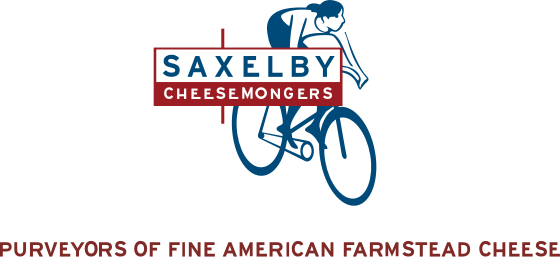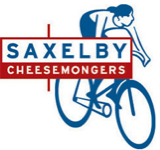
The future (and past!) of cheese is female!
Throughout history, women have played a crucial role in cheesemaking. From European cheesemaking traditions spanning many centuries to our nascent artisan cheese boom here in the United States, the role of women in cheese cannot (and will not) be understated! In honor of Women’s History Month, Saxelby Cheesemongers is celebrating women in cheese—past, present, and future!
"Inside work": women cheesemakers in Europe
In Europe, the making of many traditional cheeses was seen as women’s work. The division of labor on the farm was simple: men performed the “outside” labor like caring for the animals, the land, and the farm’s facilities and equipment. Women did more of the “inside” work like of homemaking, child rearing and in the case of dairy farms, cheesemaking.
Of course, there were (and are) exceptions to that rule: shepherds high in the Pyrenees and Alps milked their animals in the field and made larger-format traditional cheeses like Pyrenees Brebis and Comté for example, but many of Europe’s most famed cheeses are the work of women’s hands.
The goat ladies that led the American artisan cheese movement
In the United States, women were the force behind the artisan cheese movement that began in the 1970’s as a drop in the proverbial pond. Over the past 40 years that drop has swelled to a tremendous wave of delicious cheese that can rival the best of the best from Europe or anywhere else. Those early American tastemakers have been affectionately dubbed “the goat ladies” and include icons like Laura Chenel and her famous chèvre, Mary Keehn of Humboldt Fog fame, Judy Schad of Capriole Dairy, Alison Hooper of Vermont Creamery, Laini Fondiller of Lazy Lady Farm, Barbara Brooks of Seal Cove Farm, Jennifer Bice of Redwood Hill Farm and Paula Lambert of the Mozzarella Company.
Their reasons for making cheese ranged from wanting to provide their families with healthful and wholesome foods as an extension of the Back to the Land movement, to a desire to replicate and further the reach of fabulous goat cheeses tasted while traveling, to a love of goats and goat breeding, or some happy combination of all three.
Starting with zero in terms of resources, they shared information, bootstrapped their young businesses and conjured a goat cheese revolution out of thin air. Back in the seventies and eighties there were hardly any decent milking goats available, much less the milking equipment and cheesemaking supplies necessary to make goat cheese. All of the country’s top dairy minds had been focused for more than a century on a different dairy animal – the cow – and how to optimize breeding, milk production, and equipment. Through sheer willpower and and a LOT of elbow grease, these ‘goat ladies’ pioneered the craft of making great goat cheese here in the US, and inspired generations of cheesemakers to follow!
Women popularized goat cheese in the US
Chefs were the first to gravitate towards these fresh goat cheeses (Alice Waters and Thomas Keller were some of Laura Chenel’s first customers). Allison Hooper of Vermont Creamery made her first batches of chèvre for chefs in Vermont and Boston who craved it but had no source for it. Chefs paved the way for the “civilians,” regular folks who might not have travelled abroad and tasted goat cheese before, but who trusted the chefs and restaurateurs who demystified this delicious cheese for the American palate.
Today, some of the finest minds and hands in the American artisan movement are female. Check out a few of our favorites below and read up on women making their mark in the American artisan cheese world:
Women owned/operated American creameries
Blakesville Creamery – Veronica Pedraza
A former Saxelby Cheese employee, Veronica is now the head cheesemaker at Blakesville, and is one of the newest champions of sustainable farmstead cheese in a state where such operations are few and far between. Pedraza just opened Blakesville's doors in the summer of 2020, but has already won awards for cheeses including St. Germain and Sunny Ridge.
Boston Post Dairy – Anne and Susan Gervais
Sisters Anne and Susan (maiden name Gervais) are two of fifteen children in the Gervais family. The family has farmed in the northwestern reaches of Vermont since the 1960’s, and in 2007 Anne and Susan launched Boston Post Dairy to convert the farm’s cow and goat milk into top quality cheese. Tres Bonne is a wax-coated goat's milk gouda style cheese that is sweet, malty, musky and nutty.
Calkins Creamery – Emily Montgomery
Emily Montgomery got bit by the cheese bug after working as a dairy science consultant to some of America’s biggest dairy companies. Her family’s 6th generation dairy farm in Wayne County Pennsylvania was ailing financially, so she came up with a plan to add value to the farm’s top-quality milk by turning it into cheese! Now Calkins Creamery is thriving and produces a lineup of award-winning cow’s milk cheeses like Noble Road that Saxelby is proud to serve.
Cobb Hill Cheese – Kerry Gawalt and Lisa Marchetti
Ascutney Mountain is made at Cobb Hill Cheese, an intentional community conceived by Donnella Meadows, a thought-leader in the world of systems thinking and ecology. This community is dedicated to sustainability, and cheesemaking is one of their communal pursuits. Today Ascutney is made by Kerry and Lisa, talented cheesemakers in their own right!
Hidden Springs Creamery – Amy Forgues
Hidden Springs is the celebrated maker of Wischago, a Midwest take on the Spanish classic Manchego that took home a ribbon at 2023's American Cheese Society competition. The creamery's new owner is Amy Forgues, a farmer organizer turned dairy industry insider who's now dedicated to making farmstead sheep's milk cheese in Wisconsin.
Hollands Family Cheese – Marieke Penterman
Marieke and Rolf Penterman emigrated to the United States to start a dairy farm in Wisconsin. The cost of land in their native Holland was just too high, and their love of dairy farming was so great that it lured them across the sea! Rolf quickly established a thriving dairy herd, but Marieke missed the cheese from back home. She began making Dutch-style raw milk gouda from the herd’s milk, and a new business was born!
Lazy Lady Farm – Laini Fondillier
Laini Fondiller has been making cheese at Lazy Lady Farm since 1987. Today she produces over 20 varieties of goat and cows' milk cheese on her remote, off-the-grid, solar and wind powered farm. Laini milks a small herd of goats—roughly 30 to 40—from March through January, and sources cows' milk from neighboring Butterworks Farm when her goats are pregnant and 'on unemployment' during the winter months.
Meadow Creek Dairy – Helen and Kat Feete
Grayson is made by a dynamic mother-daughter team in Galax, Virginia. Helen was the first cheesemaker in the United States to make a supple, stinky, washed rind cheese, and was told by a few along the way that she couldn’t do it! After some tutelage from European cheesemakers, particularly Giana Ferguson of Gubbeen cheese in Ireland, Helen perfected her craft. Meadow Creek also makes the delectable Appalachian and Mountaineer.
Nettle Meadow Farm – Sheila Flanagan and Lorraine Lambiase
Sheila and Lorraine purchased Nettle Meadow Farm after deciding to ditch their ‘normal’ jobs in favor of farm life. Kunik, their signature cheese, is truly one-of-a-kind. It is a triple-creme blend of goat’s milk from their farm, and cow cream sourced by a neighboring farm. Nettle Meadow Farm is unique because in addition to being a working dairy farm, it is an animal sanctuary where Sheila and Lorraine can care for animals – both retired dairy goats of their own as well as other animals who need a good home.
Stony Pond Farm – Melanie Webb
Melanie and her husband Tyler have been operating an organic dairy farm for 15 years, and started making cheese in 2019. Their Swallowtail Tomme reminds us mongers of Tomme de Savoie from France, with a supple, claylike texture, and a rind covered in downy gray and earthy brown molds endemic to the cheese cave.
Seal Cove Farm – Barbara Brooks
Seal Cove Farm was founded in 1976 by Barbara Brooks. She began innocently enough, as most cheesemakers do, with just two does who produced milk for her family and for some forays into making fresh chevre in her kitchen. Brooks now makes up to 700 pounds of cheese per week when the goats are in their peak season, and buys some cows' milk from the local university to make mixed milk cheeses. Seal Cove's Dill and Garlic Chevre is light, tangy, fluffy, and delicious.
Goat Lady Dairy – Carrie Routh Brads
In the Piedmont region of North Carolina with her husband Bobby, Brads makes a half dozen goat's and cow's milk cheeses, including the petite creamy Snow Camp, the ash lined Sandy Creek, and the surprising Smokey Mountain Round. The creamery was founded in 1995 by goat lady Ginnie Tate. The Brads took over the business in 2009 after Tate's passing, to ensure the land would be retained for agricultural use instead of development.
Rachel Fritz Schaal – Parish Hill Creamery
Rachel Fritz Schaal and her husband Peter Dixon make the sourdough of the cheese world: raw milk cheeses fermented with wild cultures, unlike the lab-cultivated cultures used by almost all American cheesemakers. This commitment to tradition lends an old school rustic richness to cheeses like Humble and Jack's Blue that's hard to find elsewhere. In addition to their work at the creamery, Schaal and Dixon develop cheese recipes for other creameries and teach cheesemakers how to make their own wild-fermented cheese.
Shop our 'Whey Cool Women' and Leading Ladies collections for our favorite women-made cheeses and accompaniments!


